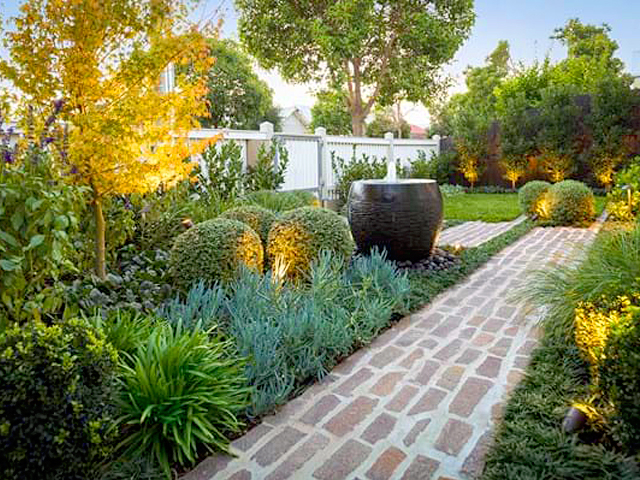Hardscaping in Landscape Design

In the realm of landscape design, the concept of hardscaping plays a pivotal role in creating visually appealing, functional, and enduring outdoor spaces. While much emphasis is often placed on softscaping elements like plants and grass, hardscaping—comprising non-plant elements such as pavements, walls, and structures—provides the foundational framework that supports and enhances the overall landscape. This article delves into the significance of hardscaping, its various components, and how it contributes to the aesthetic and practical aspects of landscape design.
Understanding Hardscaping
Hardscaping refers to the built environment in a landscape, encompassing all the non-plant elements. These can include:
- Pavers and Patios: Flat surfaces made from materials like concrete, stone, or brick.
- Retaining Walls: Structures used to hold back soil and create level areas.
- Walkways and Pathways: Routes for movement, which can be functional and decorative.
- Fencing and Walls: Boundaries that provide privacy and structure.
- Water Features: Including fountains, ponds, and waterfalls that add a dynamic element.
- Outdoor Living Spaces: Such as kitchens, fire pits, and seating areas.
The Functional Benefits of Hardscaping
- Enhanced Structure and Organization
Hardscaping elements provide essential structure to a landscape. For instance, retaining walls can transform a sloped yard into usable, flat areas for gardening or outdoor activities. Pathways guide movement through the garden, ensuring that visitors have clear and safe routes to follow. The strategic placement of hardscape features can also help define different zones within a yard, such as separate areas for dining, relaxation, and play.
- Durability and Low Maintenance
One of the significant advantages of hardscaping is its durability. Unlike plants that require regular care and are susceptible to seasonal changes, hardscape elements are built to withstand weather conditions and heavy use. Materials like stone, concrete, and brick are highly durable, often requiring minimal maintenance compared to softscaping. This makes hardscaping an ideal choice for busy homeowners or those looking for a low-maintenance solution.
- Water Management
Effective water management is another crucial aspect of hardscaping. Features such as permeable pavers and retaining walls can help manage rainwater runoff and prevent erosion. By incorporating drainage systems and water features, hardscaping not only addresses practical concerns but can also enhance the aesthetic appeal of the landscape.
The Aesthetic Impact of Hardscaping
- Visual Appeal and Design
Hardscaping elements add visual interest and contrast to a landscape. The use of different materials, textures, and colors can create a harmonious balance with the natural surroundings. For example, a flagstone patio with a cobblestone border can provide a rustic charm, while sleek concrete pavers might lend a modern touch. The design of hardscape features allows for creativity and personalization, enabling homeowners to express their style and complement the architectural elements of their home.
- Creating Focal Points
Hardscaping can be used to create focal points and draw attention to specific areas of the garden. A well-designed water feature, such as a cascading waterfall or a koi pond, can serve as the centerpiece of a landscape. Similarly, a beautifully crafted pergola or gazebo can become an inviting focal point for gatherings and relaxation.
- Seasonal Interest
Unlike plants that change with the seasons, hardscaping elements provide year-round interest. A well-designed patio or outdoor fireplace can be enjoyed in all seasons, while strategically placed lighting can highlight features and extend the usability of outdoor spaces into the evening.
Integrating Hardscaping with Softscaping
Successful landscape design requires a balance between hardscaping and softscaping. Integrating these elements thoughtfully can enhance the overall design and functionality of the outdoor space.
- Complementary Design
When integrating hardscaping with softscaping, it’s essential to ensure that the two elements complement each other. For instance, a garden path made from natural stone can blend seamlessly with a surrounding flower bed. Similarly, a wooden deck can provide a warm contrast to the cool tones of a well-maintained lawn.
- Transitioning Between Elements
Smooth transitions between hardscape and softscape elements are crucial for creating a cohesive design. For example, incorporating a gradual slope or a set of steps can bridge the gap between a raised patio and the surrounding garden. Using plantings to soften the edges of hardscaping features can also create a more natural and inviting look.
- Functional Integration
Hardscaping should be designed with functionality in mind, ensuring that it works well with the surrounding softscaping. For example, the placement of outdoor seating should consider both sun exposure and shade, and paths should be designed to accommodate foot traffic without disturbing plantings.

Practical Considerations in Hardscaping
- Budget and Planning
Hardscaping projects can vary widely in cost depending on the materials used and the complexity of the design. It’s important to plan carefully and set a budget before starting a project. Prioritizing essential features and phasing the project can help manage costs effectively. If you want more information about the role of hardscaping in landscape design, start your exploration to learn more.
- Professional Expertise
While some hardscaping projects can be tackled as DIY endeavors, others may require professional expertise. Complex installations, such as retaining walls or intricate paving patterns, often benefit from the skills of experienced contractors. Consulting with a landscape designer or architect can also help ensure that the hardscaping complements the overall design and meets functional requirements.
Conclusion
Hardscaping is a fundamental aspect of landscape design, providing both functional benefits and aesthetic appeal. By incorporating elements such as pavements, walls, and outdoor living spaces, homeowners can create well-structured, durable, and visually engaging outdoor environments. When thoughtfully integrated with softscaping, hardscaping contributes to a balanced and harmonious landscape, enhancing the beauty and functionality of outdoor spaces. Whether you’re designing a new garden or updating an existing one, understanding the role of hardscaping can help you achieve a cohesive and stunning landscape design.

